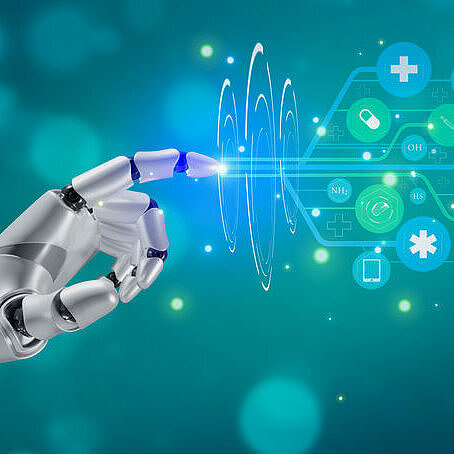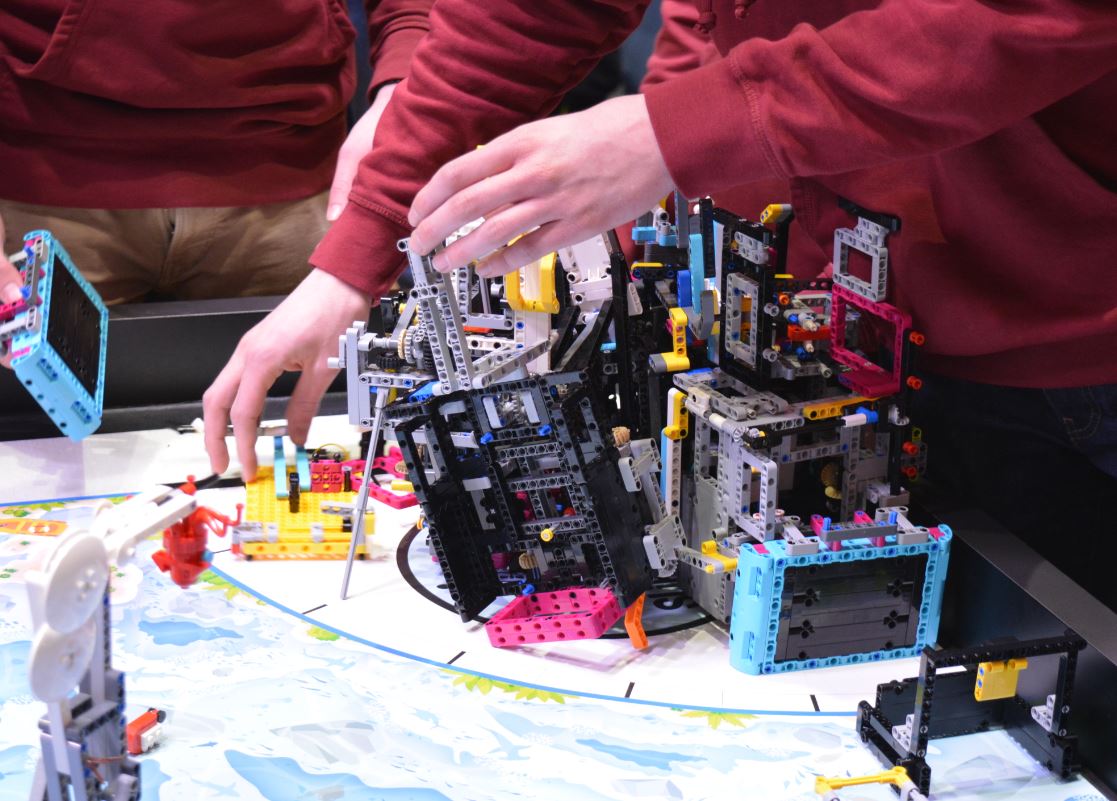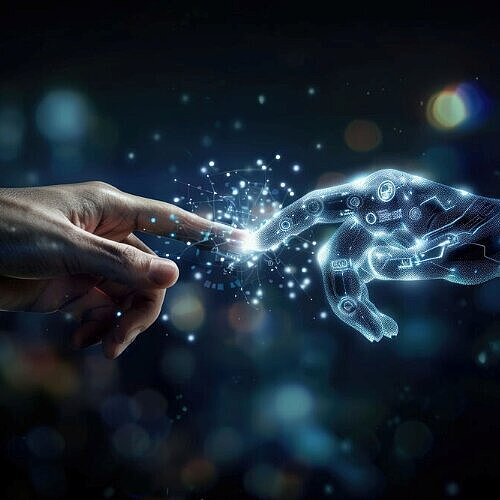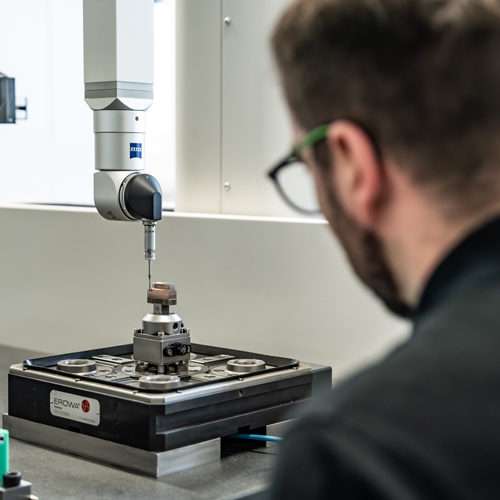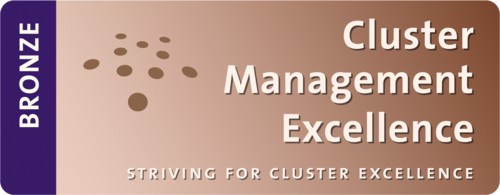We combine comprehensive expertise with a lively and resilient network of committed players who are active in a wide variety of areas of digital and industrial transformation. We focus on the intensive exchange of experience, the targeted promotion of innovative ideas and the active shaping of future-oriented developments. Our network thrives on the diversity of perspectives and the shared vision of shaping progress in a sustainable and practical way.
Through this close cooperation, we create an environment in which creative impulses are generated and new approaches to solutions are promoted. We support companies, organizations and initiatives in mastering the challenges of digital transformation while at the same time identifying and exploiting opportunities.
Trends:
- Embedded & case-specific AI: AI is increasingly being integrated into production processes, not just as a "nice-to-have" - e.g. for quality control, predictive maintenance or real-time optimization.
- Generative AI / automated design: use of AI models to generate and optimize product designs faster, for example in terms of material usage or lightweight construction.
- Digital twins & simulation: Virtual replicas of production facilities or processes are becoming more important for scenario planning, optimization, simulation of changes without real interruption.
- Edge AI + IoT integration: Data is increasingly being processed close to the source (machines, sensors) in order to reduce latency, enable real-time control and save bandwidth/data transport.
- Operational AI systems: Systems that not only make predictions, but also intervene in production lines or automatically adjust parameters (adaptive control).
Challenges:
- Data quality, data availability and silos.
- Skills/job profiles are changing - production teams need more knowledge in data analysis, AI tooling.
- Security and robustness: How to protect AI systems against attacks, errors and unintended consequences?
- Scaling and integration into existing systems.
Further information
Are you interested in this topic and would like more information? Would you like to actively contribute to this topic? Feel free to contact us!
Your contact


Trends:
- Hyperautomation: Combination of robot-supported automation solutions, RPA, AI and analytics to automate as many processes (productive, administrative) as possible.
- MES/SCADA / real-time monitoring: Modern process automation increasingly relies on systems that control and monitor production processes in real time.
- Shorter throughput times & responsiveness: Just-in-time / just-in-sequence requirements, greater diversity of variants, demand for shorter delivery times require more flexible automation processes.
- Sustainability & resource efficiency: Automation to lower material and energy consumption, reduce waste and make processes more efficient.
Challenges:
- Increasing complexity - automated processes have to deal with a variety of products, components and supply chains.
- High initial costs; ROI must be clear, especially for SMEs.
- Integration of old and new systems, standardization.
Further information
Are you interested in this topic and would like more information? Would you like to actively work on this topic? Please feel free to contact us!
Your contact


Trends:
- Electrification and increased efficiency: demand for more efficient drives (fewer losses, better energy management, energy recovery).
- Integration of sensor technology & intelligence: drives with integrated sensors, monitoring (temperature, vibration), self-diagnosis.
- Lightweight & compact designs: Reduced mass, more compact housings, optimized cooling, etc., particularly relevant for mobile systems or in vehicles.
- Modularity & flexible drives: Universal drive modules or modular systems that can be used in different configurations.
- Regenerative drives & hybrid systems: Combinations with electric, hydraulic or pneumatic components, energy recovery if necessary.
Challenges:
- Thermal issues & cooling at high power.
- Materials and manufacturing techniques (e.g. coatings, precision) must also cope with increasing complexity and higher requirements.
- Reliability, service life, maintainability.
Further information
Are you interested in this topic and would like more information? Would you like to actively work on this topic? Please feel free to contact us!
Your contact

 Dr. Andreas Hackner,
Dr. Andreas Hackner,
Trends:
- Mobility + cobots: Mobile cobots (mobile bases + collaborative gripper arms) are gaining in importance. They extend the field of application beyond stationary workstations.
- Simple programming & adaptivity: Cobots are becoming more user-friendly, with more intuitive interfaces, AI-supported planning and adaptivity (e.g. learning ability, simple conversion).
- Safety & human-robot collaboration: New safety concepts, attention to ergonomic aspects, safer sensor technology (e.g. distance detection, collision avoidance).
- Use in areas with a shortage of skilled workers: Cobots help to alleviate labor shortages by taking on tasks that are repetitive or physically demanding.
- Digital twins & simulation also in robotics: Before planning and operation, for validation, to optimize cycle times, movements and layouts.
Challenges:
- Safety (physical and IT) when working directly with humans.
- Flexibility vs. complexity: Quick to set up, but many applications require adjustments.
- Cost and maintenance, especially for moving units.
Further information
Are you interested in this topic and would like more information? Would you like to actively work on this topic? Feel free to contact us!
Your contact
 Dr. Andreas Hackner,
Dr. Andreas Hackner,

Trends:
- IT-OT convergence & visibility: Many companies are increasingly connecting their production (OT) with IT networks. This increases the attack surface. Visibility across both areas (monitoring, logging) is becoming more important.
- Zero trust architectures in production networks and OT. Every access is checked, no longer "everything within the network is trusted".
- Regulation & compliance: New laws and regulations (e.g. EU-wide Cyber Resilience Act, NIS2, IEC 62443) enforce stricter security requirements.
- Security hardware & firmware measures: Stronger authentication, encryption, secure boot processes, Hardware Security Modules (HSM), etc. Also the protection of firmware and components against manipulation.
- Ransomware and supply chain attacks: Production facilities are more frequently the target of ransomware, attacks via suppliers or networked third-party providers are on the rise.
Challenges:
- Old systems and devices with outdated protocols that were not originally designed for networked environments.
- Shortage of security specialists, especially OT security.
- Balance between security and availability/performance - production systems should run as smoothly as possible, but security must not lead to major additional costs.
Further information
Are you interested in this topic and would like more information? Would you like to actively work on this topic? Please feel free to contact us!
Your contact


Trends
- Automated AM cells & robotics
- Integration of robots for handling, assembly and post-processing.
- AM becomes part of networked production lines.
- In-situ monitoring & digital twins
- Sensors + AI enable process monitoring in real time.
- Goal: consistent quality and self-regulation.
- AI & Design for AM (DfAM)
- AI-supported topology optimization and parameter control.
- Function integration instead of classic assemblies.
- Multi-material & embedded functionality
- Combination of structural and functional materials (sensors, conductor paths).
- Creation of genuine mechatronic components "from the printer".
- Scaling & sustainability
- Focus on series production capability, material efficiency and recycling.
The challenges
- Process stability & reproducibility
- Fluctuations between systems and batches make series production difficult.
- Post-processing & throughput
- Post-processing remains a bottleneck - automation is crucial.
- Material & qualification costs
- Limited variety of materials, high testing costs, standards still lacking in some cases.
- System integration
- Interfaces to robotics, MES/ERP and safety standards often inconsistent.
- Competencies & economic efficiency
- Need for interdisciplinary expertise (AM + automation + data analysis).
- High investments, ROI only with well thought-out use case.
Further information
Are you interested in this topic and would like more information? Would you like to actively work on this topic? Please feel free to contact us!
Your contact


Become a partner
Partner package with added value for Industry 4.0 and digitalization
With the partner package, the Mechatronics & Automation Cluster offers companies and scientific institutions a special range of services relating to innovations and many additional benefits in the field of mechatronics & automation. Become a member of a strong network and secure your benefits.
Annual reports of the Mechatronics & Automation Cluster
Transformation as the new normal
The cluster provides new impetus from the world of mechatronics and automation. As a gateway between the digital and real world, mechatronics enables the use of digitalization and artificial intelligence in technical systems. This applies not only to industrial production, but also to solutions in the fields of mobility, healthcare and energy, for example.

 Rainer Brem,
Rainer Brem,













Curious about other clusters?
Discover the full diversity of the Bavarian cluster landscape and find exactly the right partners in other sectors and fields of technology to take your ideas, projects and technologies forward.
Whether SMEs, research or industry - on the cluster overview page of the Bavarian State Ministry of Economic Affairs, Regional Development and Energy you will get a comprehensive insight into all clusters, partner networks and the central players behind Bavaria's innovation dynamics.
Would you like more direct exchange? Become part of our cluster community on LinkedIn and look forward to new impulses and contacts! Strong in Bavaria's clusters - #EffizientVernetzt
Cluster management
 Dr. Andreas Hackner,
Dr. Andreas Hackner,

Cluster spokesperson
 Prof. Dr. Gordon Rohrmair,
Prof. Dr. Gordon Rohrmair,

Cluster management



International projects

Organization & Marketing





